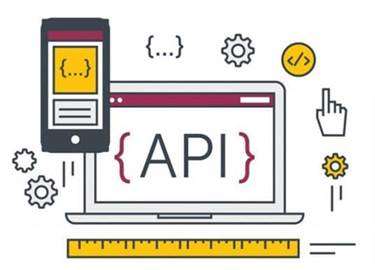Lean Development emphasizes building in quality from the start by integrating quality checks, automated testing, and continuous feedback loops. By promoting a focus on quality throughout the development process, Lean Development helps ensure high-quality work. Yes, Lean Development emphasizes delivering value quickly to customers. By eliminating waste, streamlining processes, and implementing efficient practices, it can optimize development time. Lean Development emphasizes delivering value to the customer as quickly as possible. This lean development principle requires efficient collaboration, constant feedback, and a focus on delivering the minimum viable product (MVP) to maximize customer value.

And since it’s more efficient, you don’t have to spend as much time waiting for things like code reviews or QA testing, allowing you to get more done faster. Don’t treat them like cogs in an assembly line; the seventh principle of lean manufacturing is respect for people. This means that you need to understand each individual’s needs and not treat them like cogs in an assembly line. You should make sure your employees are treated fairly and with dignity, as well as give them the freedom to make decisions about how they do their work.
Software Developer vs Software Engineer: Know the Differences
Lean applies continuous improvement by removing waste from the process. On the other hand, agile is a set of principles to develop software iteratively and deliver value increments. Lean product development allows companies to build products faster with less waste. Lean product development improves communication across departments and eliminates communication silos completely, which leads to the production of better products. Today, this methodology is used by many software development companies as a new product development process to both quickly deliver new products and features, and improve and optimize existing products and processes.
Value stream mapping tracks each of the steps and processes to bring a product from inception to delivery. Organizing your processes visually where everyone can see them allows teams to clearly see what does and doesn’t provide value. If any steps or processes don’t bring value to the customer or are found to be otherwise wasteful, they are eliminated or reduced as much as possible.
What Lean Product Development principles have the best Return on Investment?
Often, the best ideas come from the people with their hands on the product. In most organizations, decisions are made at the top of the organization and trickled down to the frontline. Lean thinking encourages allowing everyone, especially those closest to the product and the customer, to have an equal voice, to ensure that the voice of the customer, and what is lean development methodology those doing the work, is heard. This is the Lean concept of going to the gemba – going to the place where the work is done – to get ideas for improving work and creating value. Lean thinking says that good people want to do their best work and are motivated to make decisions that optimize their time and talent to create the most value for the customer.

And whether what we deliver is a failure or a success (or somewhere in between), we gain valuable insight into how to improve. This is how we achieve business agility; this is how we, through the process of creating value, eliminate waste. Lean methodology originated with the Toyota Production System, or TPS, which revolutionized the manufacture of physical goods in the 1950s, ‘60s, and beyond. Lean maintains its hold in manufacturing, but has also found new applications in knowledge work, helping businesses in all industries eliminate waste, improve processes, and boost innovation.
The Five Principles of Lean
Ensure that your hired software developers fix any repetition or irrelevant items in the software development process. A common misconception of lean product development is that it takes a lot of time to begin and maintain. Any time you begin a new (to you) way of doing things, you have to expect that not everything will go according to plan from the outset. However, once you’re past the “break-in period” with lean, you begin to realize its benefits. Lean is identifying and eliminating waste — improving the flow of processes. Lean Software Development is a lightweight, Agile framework that focuses on reducing time and resources, eliminating waste, and ultimately delivering only what the product needs.
For example, if the developers are measured on productivity, they might be inclined to send as much code as possible to the testers as rapidly as possible without concern for the quality of the code. The Poppendiecks, instead, encourage teams to focusing on their ultimate team goal, enabling prudent trade-offs between organizations. Akash Lomas is a Technical Architect with over 10 years of experience in the software development industry. He has extensive experience in the MS stack, coding, and enhancing process delivery. Akash is a highly skilled and experienced technologist passionate about building high-quality software. Lean development methodology borrows heavily from manufacturing, where “lean” became a process of removing “waste” – less human effort, less equipment, less time, and less space.
Respecting the team
Engineers need to learn and improve the product every step of the way. Having the right knowledge (both technical and business) helps to make better data-driven decisions. Lean software development is a translation of lean manufacturing principles and practices to the software development domain. Adapted from the Toyota Production System,[1] it is emerging with the support of a pro-lean subculture within the agile community. Lean offers a solid conceptual framework, values and principles, as well as good practices, derived from experience, that support agile organizations. The last three Lean principles highlight some of what the Lean methodology has in common with Agile.
The Lean approach is often applied as the Minimum Viable Product (MVP) technique, in which a team creates a barely functioning prototype and offers it to the market. The team then gathers feedback from customers about what they enjoy, dislike, and want to see improved and iterates based on this information. Lean thinking has to be understood well by all members of a project, before implementing in a concrete, real-life situation. “Think big, act small, fail fast; learn rapidly”[8] – these slogans summarize the importance of understanding the field and the suitability of implementing lean principles along the whole software development process. Only when all of the lean principles are implemented together, combined with strong “common sense” with respect to the working environment, is there a basis for success in software development. Agile is a separate methodology whose focus is driving a dynamic, iterative development process to develop products aligned with business goals.
Lean Software Development
Lean teams that understand the larger picture are better at identifying waste, eliminating bureaucracy, and creating a repeatable, standardized process. Lean product developers are fixated on building products that customers find useful because knowing what their customers want helps teams eliminate waste. Waste is defined as any part of the development process or material input, including man hours, that don’t add value for the customer. In the software industry, for example, UX designers often conduct extensive customer research and use volunteers, focus groups, advisory boards, and user tests to understand customers’ likes and dislikes.
- By focusing on the essentials and cutting out the unnecessary, you can create software that truly meets your customers’ needs and exceeds their expectations.
- It’s about putting a process in place that ensures value isn’t lost or team morale is maintained as products move through the delivery cycle.
- This means starting with a small amount of functionality and then adding more features as users request them.
- In traditional development, each department owned a piece of the assembly line and didn’t fully understand the roles other departments played.
- Teams that are resource-strained can use this approach to compete with larger companies with bigger budgets.
- You can use this Lean practice to identify the steps necessary to complete the project, the critical paths, where delays tend to happen, and more.
A lean product development approach relies on a streamlined product development process to mitigate risk, reduce bottlenecks, and create efficient workflows. To do this, you need to set the blueprint for the rest of the team to follow. The same principles apply to lean product development for software — get more done with fewer resources. But it requires a considerable https://www.globalcloudteam.com/ amount of focus to accomplish; your team will need to understand exactly what they’re responsible for at every stage of the product development lifecycle. Another large source of waste in software development is extra features. Otherwise, they could face criticism, contract renegotiation, and an arduous change control process for adding or changing requirements.
Learn how Lean Product and Process Development principles are advancing innovation in a variety of industries.
The focus on delivering value to customers early often helps you get feedback on whether your product is useful and how you can improve it. This allows you to iterate quickly and constantly improve your product. Lean Development emphasizes mapping and analyzing the value stream, which represents all the steps involved in delivering value to the customer. By identifying and eliminating non-value-adding activities, Lean Development optimizes the value stream to maximize efficiency and customer value. Seeing how Toyota’s lean approach was improving efficacy, time and cost management, and maximizing customer value, many other manufacturing teams — across a range of industries — started to follow suit. Toyota has been credited with inspiring the lean development framework based on agile principles, so much so that when this process was first developed it was referred to as the Toyota Production System.



